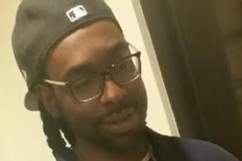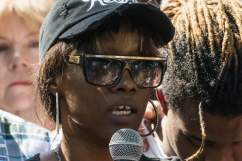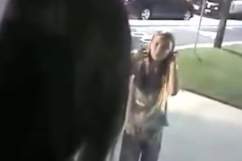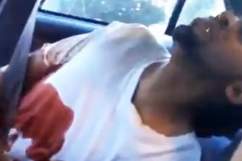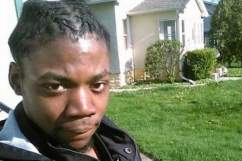
Minnesota Governor Mark Dayton met with protesters outside the governor’s mansion after Philando Castile was shot and killed. (Getty)
Video of Philando Castile of Minnesota dying after a police officer allegedly shot him in his car was streamed live on Facebook by his girlfriend, Lavish Diamond Reynolds, as it was happening on Wednesday. Protesters quickly gathered outside the state’s governor’s mansion in St. Paul, requesting a response from Governor Mark Dayton. He said that he has requested a federal investigation into the incident, which was the second time this week that a black man was shot by police.
In the video, Reynolds explained to viewers that an officer asked Castile for his license and registration after a traffic stop in Falcon Heights, Minnesota. She said that an officer shot Castile four times after Castile told the officers that he did have a firearm and a concealed carry permit. Reynolds continued streaming even after she was asked to get out of the car and continued hoping that Castile was not going to die. The 32-year-old later died at the hospital.
Here’s what you need to know about Dayton and his response to the shooting.
1. Dayton Spoke With the White House Chief of Staff, Calling for a Federal Investigation
In a statement after the shooting, Dayton said that the spoke with White house Chief of Staff Denis McDonough, asking for a federal investigation from the Department of Justice. The Department of Justice is also working on an investigation into the shooting of Alton Sterling, who was shot by police officers in Baton Rogue, Louisiana.
Dayton also said that the Minnesota Bureau of Criminal Apprehension started an investigation.
“They are currently collecting all necessary evidence, and interviewing witnesses, to determine what happened, and to assure that justice in this case is served,” Dayton said. “I will do everything in my power to help protect the integrity of that investigation, to ensure a proper and just outcome for all involved.”
Dayton also spoke to the protesters and the media gathered outside the governor’s mansion Thursday, again insisting that “justice will be served” in this case.
“Would this have happened if the driver were white, if the passengers were white?” Dayton said late Thursday at a press conference, reports the New York Times. “I don’t think it would have.”
2. There Were Rumors That Dayton Was Evacuated From the Governor’s Mansion
There were rumors that Dayton was evacuated from the governor’s mansion. However, his office told the New York Times that this was not true.
Still, protesters were not happy that it took Dayton until the morning to come out to make a statement. In the above video, protesters are heard yelling “Wake up!” outside the mansion. Others yell, “No justice, no peace!”
Dayton issued the following statement after the Dallas shootings:
The terrible acts of murder in Dallas have shocked and horrified the nation. Minnesotans join with the nation in mourning with the families and friends of these fallen officers. Today, our hearts also go out to the many, many law enforcement officers who faithfully serve our communities, and risk their lives every day and night to protect and serve the people of Minnesota and the nation.
“I ask all Minnesotans, from all faiths and walks of life, to pray and work for an end to the violence that has defined this last week. I urge all of us, everywhere, to call upon our own best natures: to care for one another, seek to understand one another, and together build stronger, safer communities for everyone.
3. Castile’s Death Comes Nine Months After Another Black Man Was Shot By Police in Minnesota
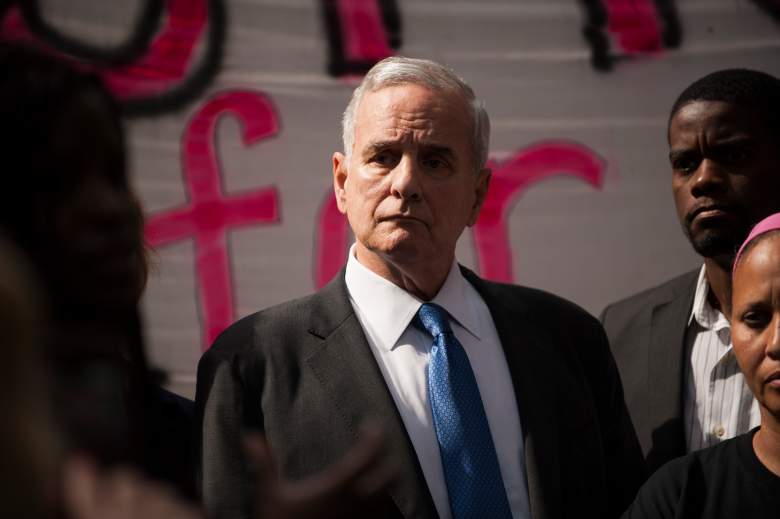
Mark Dayton. (Getty)
In November 2015, Jamar Clark was allegedly shot by police and later died at a hospital. Full video of the shooting was later released and the two officers involved did not face charges. A grand jury declined to peruse the case. As City Pages notes, the case was investigated by federal authorities for civil rights violations, but no charges were filed.
Dayton released a statement on the Clark case in March, stating that, “These events should require all Minnesotans to take a hard look at our criminal justice system, where it works, and where it does not.”
After it was decided not to charge the officers, Dayton said that, “We need to move ahead.” He called on the state legislature to pass his new proposed budget, which he said would help close the state’s racial divide.
4. Minnesota’s Two-Year Budget Includes $100 Million for Eliminating Racial Disparity
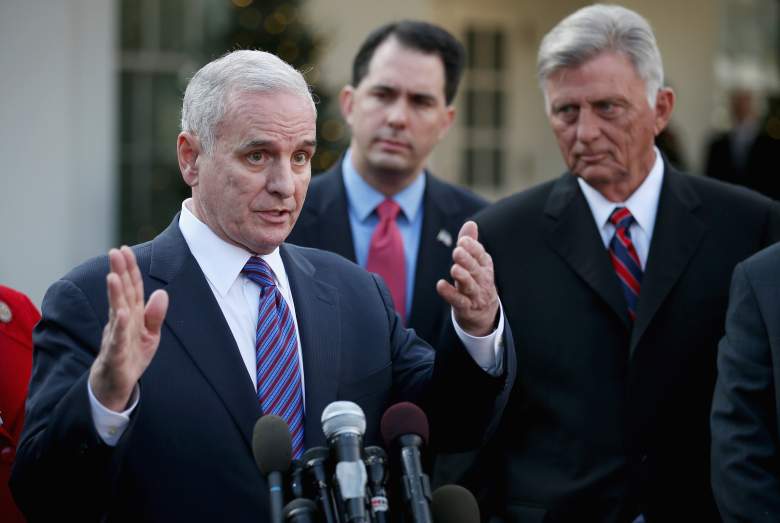
Mark Dayton in Washington, DC. in 2012. (Getty)
Dayton’s budget proposal for the state, which was passed in June, added $300 million in spending. Part of it includes $100 million set aside for programs that he says will help close the racial disparities in the state.
The proposal includes $8 million in investing in programs to help young people develop skills they need to get a good job; $4.1 million for the Pathways to Prosperity Programs; and $20 million for an Office of Higher Education program that will go to helping universities hire counselors to help students complete college. He also proposed $900,000 for the Department of Human Rights, with the hopes of making it easier for citizens to complain about alleged human rights violations.
5. Dayton Has a 100 Percent Rating From the NAACP & Supported NAACP Equity Audit
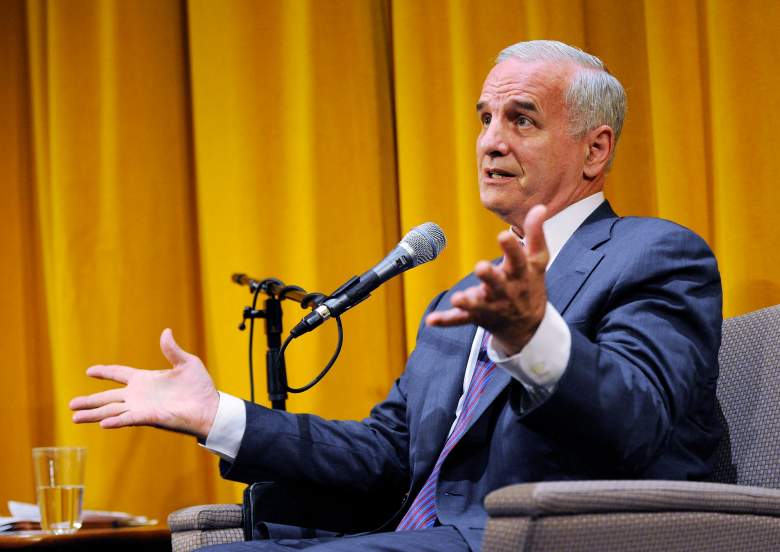
Mark Dayton in 2011. (Getty)
Dayton has a 100 percent rating from the NAACP. In April 2016, he supported a state equity audit to look into the economic and racial disparities, reports the Pioneer Press.
W.C. Jordan Jr., NAACP president for Minnesota and the Dakotas, said in a press conference that there might be a push for policies that ensure equal opportunities for minorities, there is still “a ferocious cry for equity and racial justice.”
“Our state workforce must better reflect the people we serve,” Dayton said in a statement. “I look forward to working with these working group members to review this audit’s findings, and then implementing the group’s recommendations. I thank each of them for their important community leadership.”
Jeffry Martin, President, NAACP St. Paul Chapter, said the audit was a “step in the right direction.”
